What is a RAG AI Agent? The complete guide to knowledge-powered customer experience
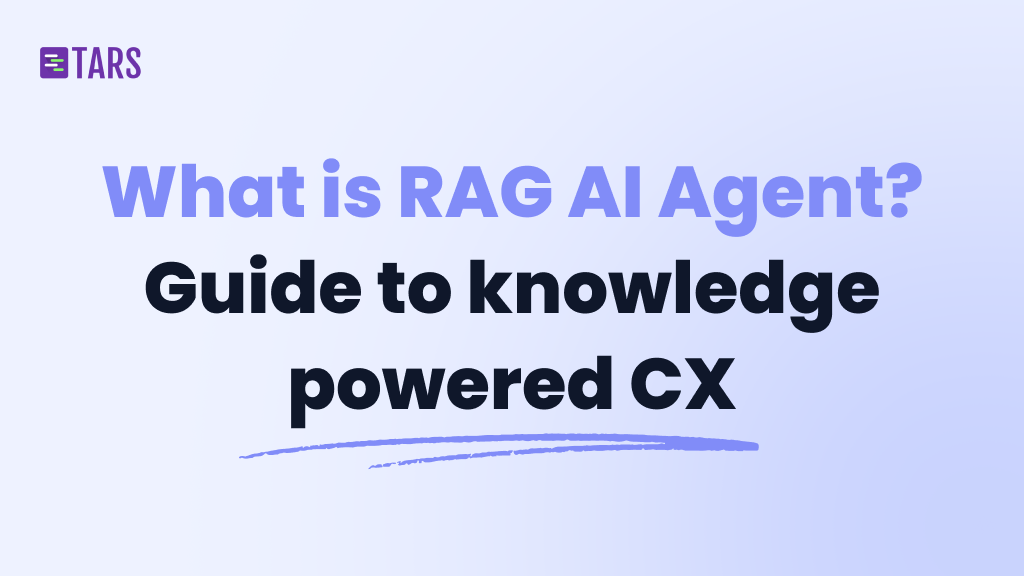
Imagine calling customer support and getting connected to an agent who has instant access to every product manual, policy document, and support article your company has ever published, and can understand exactly what you need in seconds. That’s not a fantasy about hiring thousands of expert agents. It’s the reality of RAG AI Agents.
If you’re exploring AI for customer support or lead qualification, you’ve probably encountered chatbots that sound confident but give wrong answers. Or automation tools that break when policies change. RAG AI Agents solve both problems by combining the conversational abilities of large language models with real-time access to your actual business knowledge.
This guide explains what RAG AI Agents are, how they work, and why they’re transforming customer experience automation for businesses that need accuracy at scale.
What is a RAG AI Agent?
A RAG AI Agent is an artificial intelligence system that uses Retrieval-Augmented Generation (RAG) to provide accurate, contextual responses by accessing your company’s knowledge base in real time.
Let’s break that down:
Retrieval-Augmented Generation (RAG) is a technique where an AI system retrieves relevant information from external sources before generating a response. Instead of relying solely on its training data (which gets outdated), the AI searches your current documentation, policies, and knowledge repositories to find the exact information needed.
AI Agents go beyond simple chatbots. They can perceive context, reason through problems, plan multi-step actions, and execute tasks autonomously. When you combine RAG with AI Agents, you get systems that answer questions and solve problems using your latest, most accurate business information.
Think of it this way: A traditional chatbot is like an employee who memorized your handbook six months ago. A RAG AI Agent is like an employee with photographic memory who checks the most current version of every document before responding to customers.
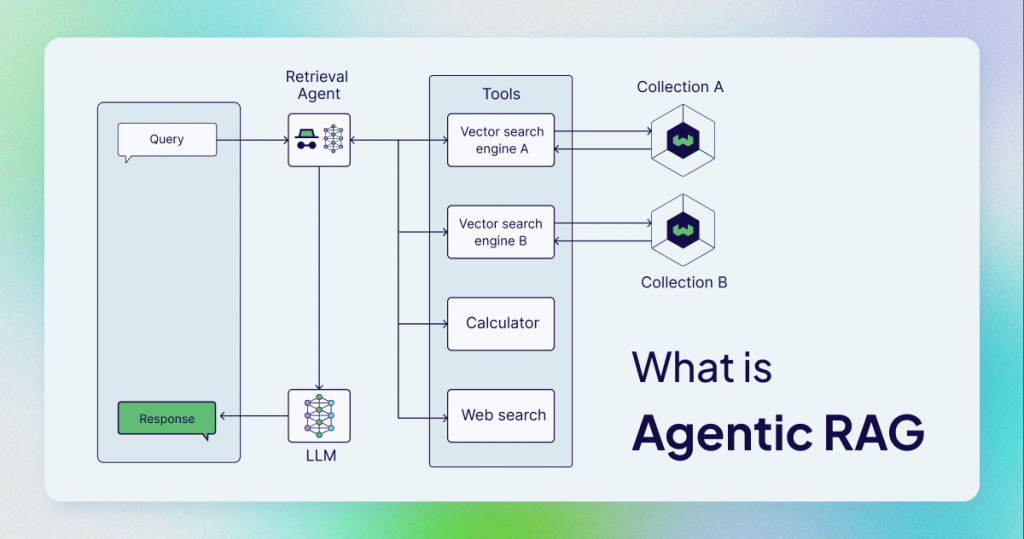
Credit: Weaviate
Why traditional chatbots fall short (and why RAG changes everything)
Traditional AI chatbots face three critical limitations that make them unreliable for customer-facing applications:
1. Hallucinations and fabricated information
Large language models are trained to sound confident. Without access to verified sources, they’ll generate plausible-sounding but completely incorrect information. For customer support or sales, this isn’t just inconvenient—it’s a liability. Telling a customer they can get a refund when they can’t, or claiming a feature exists when it doesn’t, damages trust and creates operational headaches.
2. Outdated knowledge
AI models are trained on data from a specific point in time. Your return policy changed last quarter? Was your pricing updated yesterday? The model has no idea. By the time you retrain the model (an expensive, time-consuming process), your business has moved on again.
3. Lack of specialized knowledge
General AI models lack the specifics of your products, your internal processes, or your industry regulations. They can’t help customers navigate your specific checkout flow or explain the details of your enterprise contract terms.
RAG architecture solves all three problems by grounding AI responses in your actual documentation. Instead of guessing, the AI retrieves the relevant information first, then generates accurate responses based on what it found.
How RAG AI Agents work: From knowledge to conversation
Understanding how RAG AI Agents operate helps you see why they’re so much more reliable than traditional approaches. The process involves several sophisticated steps that happen in milliseconds:
Step 1: Knowledge ingestion and semantic understanding
First, your knowledge base gets prepared for intelligent retrieval. This isn’t just uploading files—it’s about making information accessible in a way AI can understand contextually.
Multi-source ingestion connects your documents, URLs, databases, PDFs, help documentation, product specs, and any other text-based content. The system processes them intelligently rather than simply storing files.
Intelligent chunking breaks content into meaningful segments. A good RAG system preserves semantic relationships—your refund policy stays intact, and related concepts stay together. This matters because context determines accuracy.
Vector embeddings transform each chunk into mathematical representations that capture meaning, not just keywords. This is where the magic happens: “money-back guarantee” and “refund policy” become mathematically similar even though they share no common words. The system understands that “troubleshooting steps” relates to “technical requirements” and that “billing questions” connect to “subscription terms.”
Step 2: Intelligent retrieval when customers ask questions
When a customer asks a question, the RAG system conducts a sophisticated search process:
Hybrid search combines vector similarity (semantic meaning) with keyword matching, recency weighting, and source authority. If someone asks a technical question, the system prioritizes exact terminology. For policy questions, it favors the most recently approved version.
Wide retrieval followed by precise re-ranking casts a broad net initially, then uses a secondary model to evaluate which retrieved chunks are most relevant to the specific query. This two-stage approach prevents the system from missing important context while ensuring the final selection is highly relevant.
Context assembly organizes retrieved content logically with enough surrounding information to generate coherent, complete answers. The AI sees the full context, not just isolated sentences.
Step 3: Response generation with built-in validation
Unlike chatbots that generate responses freely, RAG AI Agents have constraints:
Grounded generation means the language model generates responses using only the retrieved context. No speculation. No fabrication. If the information isn’t in your knowledge base, the Agent says so rather than making something up.
Confidence scoring evaluates how well the retrieved information matches the query based on semantic similarity, source authority, and content completeness. This creates a reliability metric you can actually trust.
For customer experience automation, this validation layer is everything. It’s the difference between an AI tool you nervously monitor and an AI Agent you confidently deploy.
Step 4: Continuous learning and improvement
The most powerful aspect of RAG AI Agents is their ability to stay current without retraining:
Real-time knowledge updates mean when you update documentation, the changes sync immediately with your AI Agents. No redeployment needed. No version lag. Your system reflects your latest business information automatically.
Analytics and gap identification track conversation patterns, resolution rates, and confidence scores. You see exactly where knowledge gaps exist, which topics need better documentation, and how your AI Agents perform over time.
Traditional RAG vs. Agentic RAG: The evolution of AI-powered customer experience
Not all RAG implementations are equal. Understanding the difference between traditional RAG and agentic RAG helps explain why modern customer experience automation has become so much more capable.
Traditional RAG: the foundation
Traditional RAG follows a straightforward pattern: receive query → retrieve relevant information → generate response. It’s powerful compared to chatbots without external knowledge, but it has limitations:
- Single-pass retrieval with no refinement
- One knowledge source at a time
- No reasoning about whether the retrieved information actually answers the question
- No ability to break down complex queries into steps
For simple FAQ-style questions, traditional RAG works well. But customer conversations rarely stay simple.
Agentic RAG: intelligent decision-making
Agentic RAG integrates AI Agents into the retrieval process, adding layers of reasoning and decision-making:
Query understanding and planning: The Agent analyzes what the customer is really asking and plans how to gather the necessary information. A question like “Can I return this if I used my store credit?” requires understanding return policies AND payment method restrictions.
Dynamic retrieval strategies: Instead of a one-size-fits-all search, the Agent decides which knowledge sources to check, in what order, and whether multiple searches are needed. It can retrieve from product documentation, then check policy documents, then verify account-specific information.
Self-evaluation and iteration: After retrieving information, the Agent assesses whether it has enough context to answer accurately. If not, it reformulates the query and tries again. This reasoning loop dramatically improves accuracy.
Tool use and multi-step actions: Beyond just retrieving knowledge, agentic RAG can use external tools—checking order status in your CRM, calculating dates, or pulling real-time data from APIs.
Think of traditional RAG as asking a librarian for relevant books, then reading them yourself. Agentic RAG is like having a research assistant who understands your question, gathers information from multiple sources, evaluates what they found, and synthesizes it into a coherent answer.
For customer experience automation, this evolution matters enormously. Customer queries aren’t always straightforward. They involve multiple policies, account-specific details, and contextual nuances. Agentic RAG handles this complexity the way a skilled human agent would.
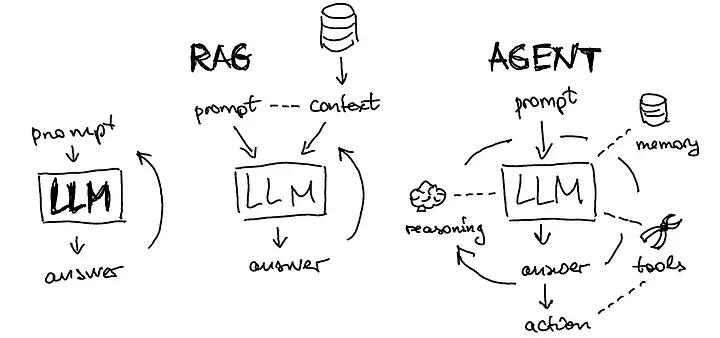
Real-world applications: RAG AI Agents in customer experience automation
The abstract technology becomes concrete when you see how businesses deploy RAG AI Agents for customer support and acquisition:
Customer support at scale
A software company receives thousands of support tickets about installation, troubleshooting, integration, and billing. Their RAG AI Agent:
- Retrieves relevant troubleshooting steps from technical documentation
- Checks the customer’s specific product version and account details
- Provides step-by-step solutions grounded in actual help articles
- Escalates to human agents only when issues fall outside documented scenarios
Result: 70% ticket deflection with higher customer satisfaction than before automation, because responses are accurate and contextual.
Intelligent lead qualification
An enterprise SaaS company uses RAG AI Agents for initial sales conversations. When prospects ask about features, pricing, or implementation:
- The Agent retrieves product capability documentation to answer feature questions accurately
- It accesses pricing information specific to the prospect’s company size and use case
- It provides implementation timelines based on similar customer deployments
- It books qualified meetings when prospects express genuine buying intent
Result: Sales teams spend time only with qualified leads who’ve already gotten accurate answers to preliminary questions.
Policy and compliance queries
Financial services and healthcare organizations face strict regulatory requirements. Their RAG AI Agents:
- Access current compliance documentation to answer policy questions
- Provide consistent information across all customer touchpoints
- Update automatically when regulations change
- Maintain audit trails of what information was provided
Result: Compliance teams trust the system because they can validate exactly what information the AI provides and trace it back to approved sources.
Multi-language customer service
Global companies need customer service in dozens of languages, but hiring native speakers for every language and time zone is expensive. RAG AI Agents:
- Retrieve information from knowledge bases in any language
- Generate responses that maintain accuracy across translations
- Handle time zone coverage without shift premiums
- Maintain consistent quality regardless of language
Result: Global support coverage at a fraction of traditional costs, with accuracy that matches or exceeds human agents.
Why RAG architecture matters for customer experience leaders
If you’re evaluating AI for customer experience automation, the underlying architecture determines whether your implementation succeeds or becomes another abandoned technology project.
Accuracy you can stake your reputation on
Every wrong answer damages customer trust. RAG architecture grounds responses in verifiable sources. When properly implemented with confidence scoring and validation layers, you know the AI isn’t making things up. This reliability is what separates useful automation from liability.
Agility when business changes
Your business evolves constantly—new products, updated policies, revised procedures. Traditional AI requires expensive retraining cycles. RAG-powered systems update automatically when your knowledge base changes. Documentation update → instant deployment. This agility means your AI Agents stay accurate as your business moves fast.
Transparency and control
With RAG, you can trace every AI response back to source documents. You see what information the Agent retrieved, how confident it was, and whether the answer met quality thresholds. This transparency gives you the control needed to deploy AI in customer-facing roles with confidence.
Scalability without quality degradation
As your knowledge base grows from hundreds to thousands to millions of documents, RAG systems maintain performance through sophisticated indexing and retrieval. You face no trade-off between comprehensiveness and speed. The system handles scale while preserving accuracy.
What makes a RAG implementation production-ready
Not all RAG systems are built for real-world customer interactions. Here’s what separates experimental implementations from production-grade platforms:
Intelligent chunking that preserves meaning
Generic chunking strategies split text arbitrarily—sometimes mid-sentence, breaking context. Production systems use semantic chunking that keeps related concepts together, preserving the meaning that makes responses accurate.
Multi-stage retrieval with re-ranking
Single-stage retrieval misses nuances. Production RAG uses wide initial retrieval followed by precise re-ranking, ensuring the most relevant information surfaces even when queries are ambiguous or multi-faceted.
Confidence scoring you can act on
Knowing when the AI isn’t confident enough to answer is as important as generating responses. Production systems provide actionable confidence metrics that let you set guardrails—only auto-respond above certain thresholds, escalate ambiguous queries, and track where knowledge gaps exist.
Real-time updates without redeployment
If updating your knowledge base requires taking AI Agents offline or waiting hours for reindexing, you’ll avoid making updates. Production systems sync changes in real time, making knowledge management frictionless.
Analytics that drive improvement
You can’t improve what you don’t measure. Production RAG provides conversation analytics, resolution tracking, sentiment analysis, and knowledge gap identification. This visibility turns your AI Agents into a continuously improving system rather than a static tool.
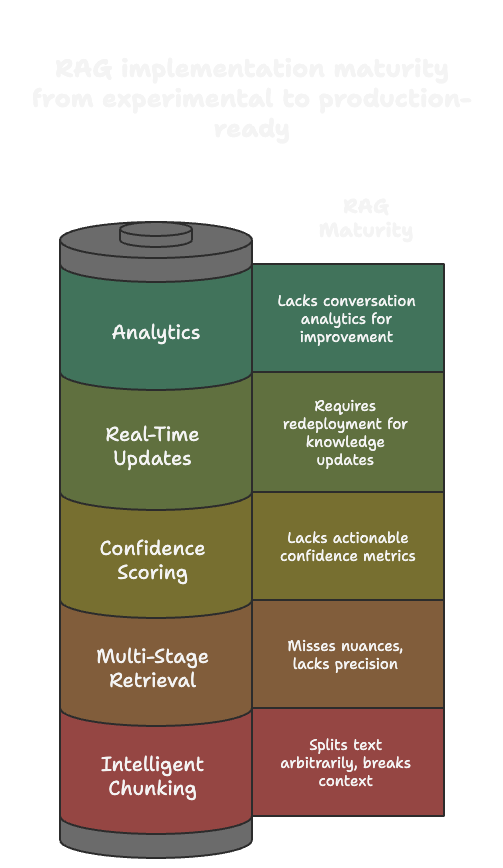
The future of customer experience is knowledge-powered
The evolution from scripted chatbots to RAG AI Agents represents a fundamental shift in what’s possible for customer experience automation. We’ve moved from hoping AI sounds helpful to ensuring AI is actually helpful.
For businesses exploring AI Agents for customer support and acquisition, understanding RAG architecture isn’t just technical knowledge—it’s strategic. The difference between RAG-powered Agents and traditional chatbots is the difference between automation you nervously monitor and automation you confidently scale.
The most successful implementations share common traits: they start with well-organized knowledge bases, they implement proper validation and confidence scoring, they measure performance continuously, and they treat AI Agents as systems that improve over time rather than one-time deployments.
If you’re ready to move beyond chatbots that sound smart but give wrong answers, if you need customer experience automation that scales without sacrificing accuracy, and if you want AI Agents that stay current as your business evolves—RAG architecture is the foundation that makes it all possible.
Ready to build AI Agents that actually work?
Tars helps businesses create RAG-powered AI Agents for customer support and lead qualification—with the reliability and accuracy needed for production deployment.
Our platform handles the complexity of RAG architecture—intelligent chunking, semantic search, confidence scoring, and real-time knowledge updates—so you can focus on creating exceptional customer experiences.
See how RAG AI Agents can transform your customer experience. Book a demo to explore what’s possible when AI Agents have access to your complete, current business knowledge.
A writer trying to make AI easy to understand.
- What is a RAG AI Agent?
- Why traditional chatbots fall short (and why RAG changes everything)
- 1. Hallucinations and fabricated information
- 2. Outdated knowledge
- 3. Lack of specialized knowledge
- How RAG AI Agents work: From knowledge to conversation
- Step 1: Knowledge ingestion and semantic understanding
- Step 2: Intelligent retrieval when customers ask questions
- Step 3: Response generation with built-in validation
- Step 4: Continuous learning and improvement
- Traditional RAG vs. Agentic RAG: The evolution of AI-powered customer experience
- Traditional RAG: the foundation
- Agentic RAG: intelligent decision-making
- Real-world applications: RAG AI Agents in customer experience automation
- Customer support at scale
- Intelligent lead qualification
- Policy and compliance queries
- Multi-language customer service
- Why RAG architecture matters for customer experience leaders
- Accuracy you can stake your reputation on
- Agility when business changes
- Transparency and control
- Scalability without quality degradation
- What makes a RAG implementation production-ready
- Intelligent chunking that preserves meaning
- Multi-stage retrieval with re-ranking
- Confidence scoring you can act on
- Real-time updates without redeployment
- Analytics that drive improvement
- The future of customer experience is knowledge-powered
- Ready to build AI Agents that actually work?


Build innovative AI Agents that deliver results
Get started for freeRecommended Reading: Check Out Our Favorite Blog Posts!
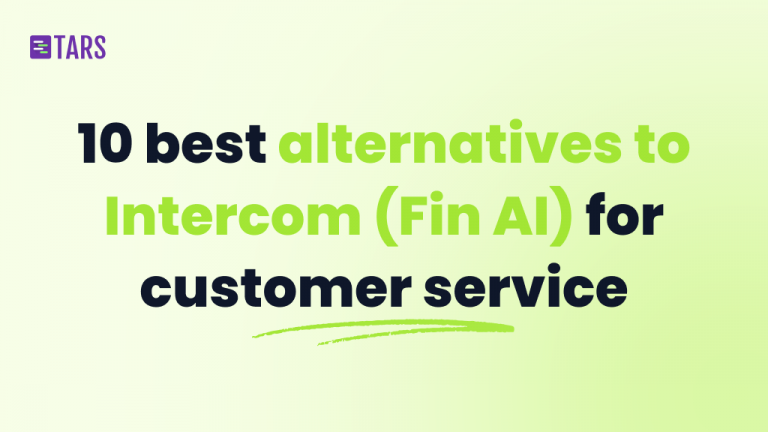
10 best alternatives to Intercom (Fin AI) for AI-powered customer service [2025]
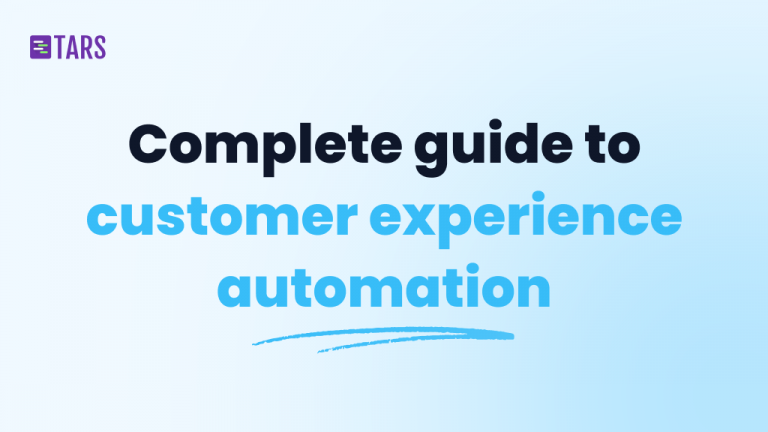
Customer experience automation: The complete guide to CXA in 2025
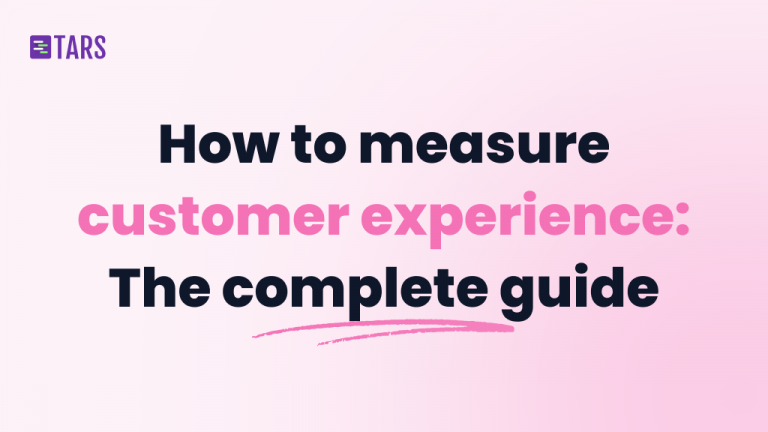
How to measure customer experience: The complete guide for AI-powered support and growth

Our journey in a few numbers
With Tars you can build Conversational AI Agents that truly understand your needs and create intelligent conversations.
years in the conversational AI space
global brands have worked with us
customer conversations automated
countries with deployed AI Agents